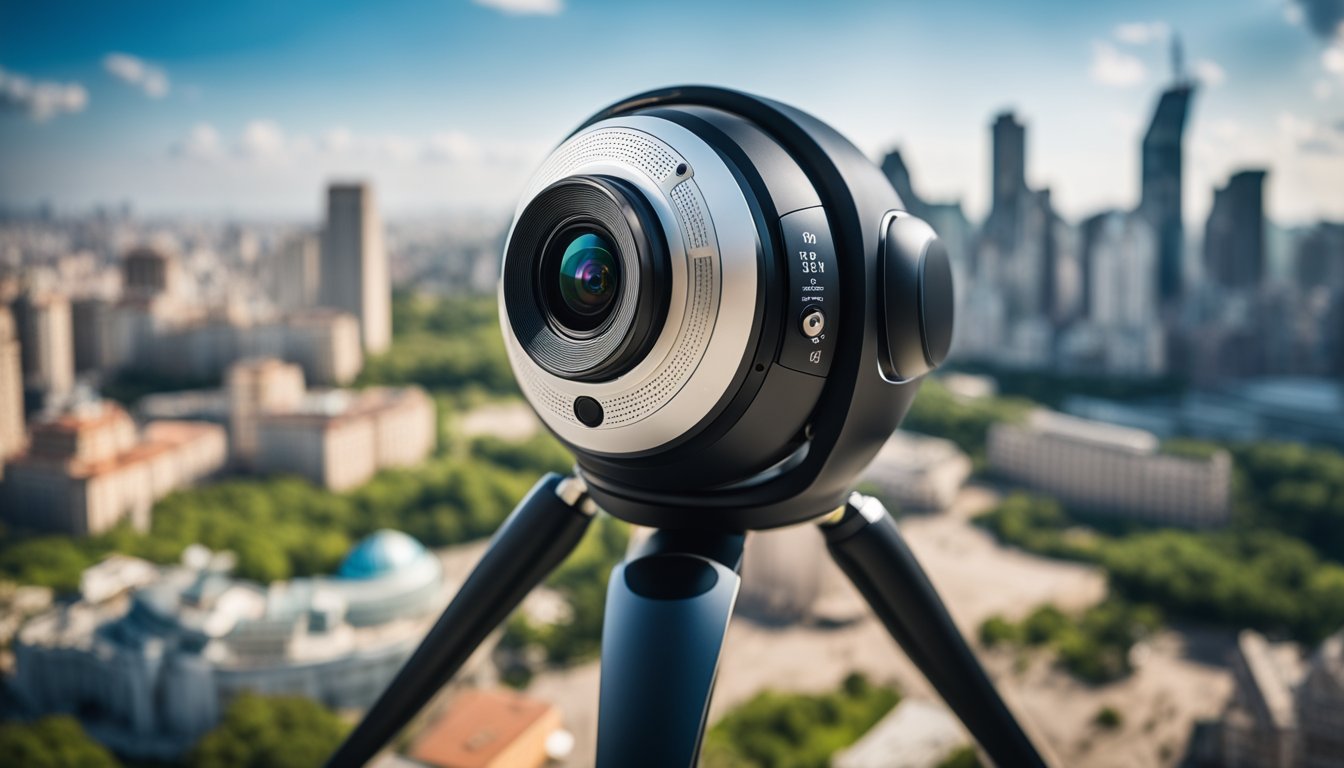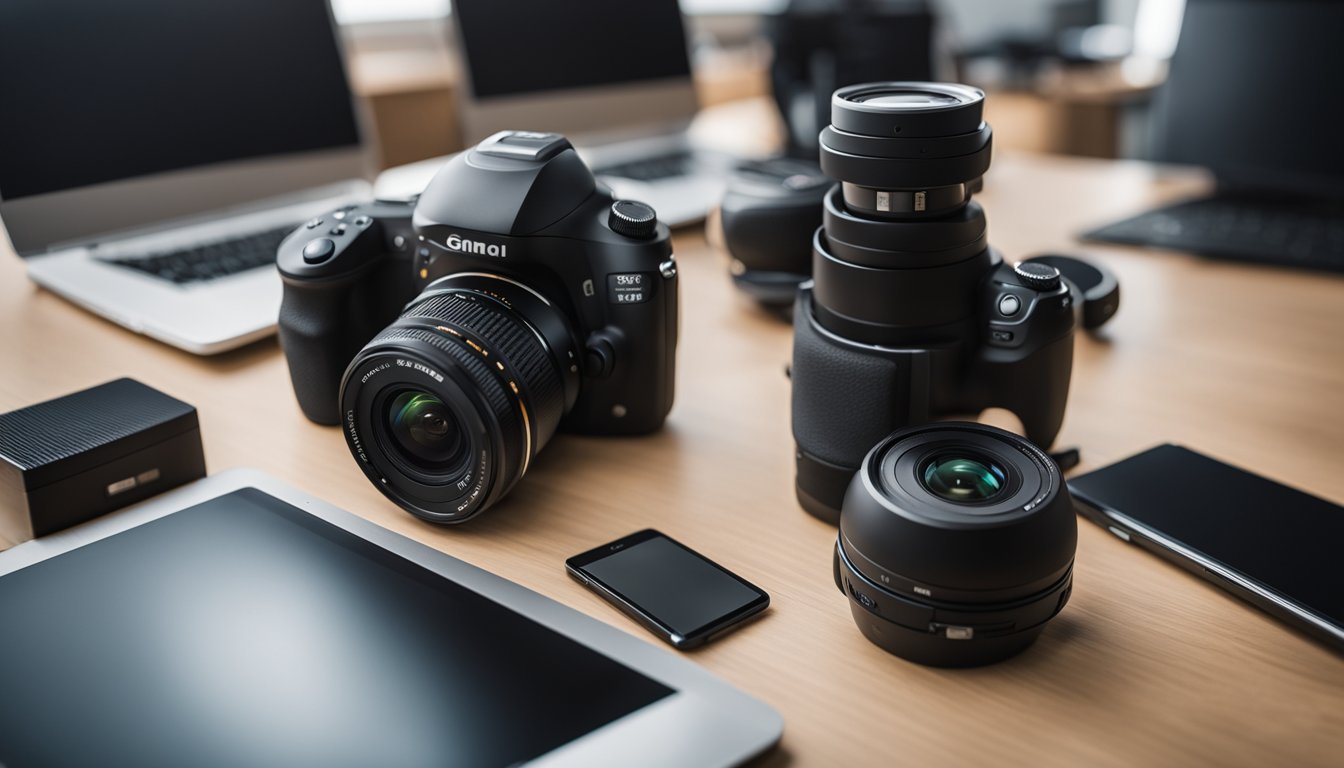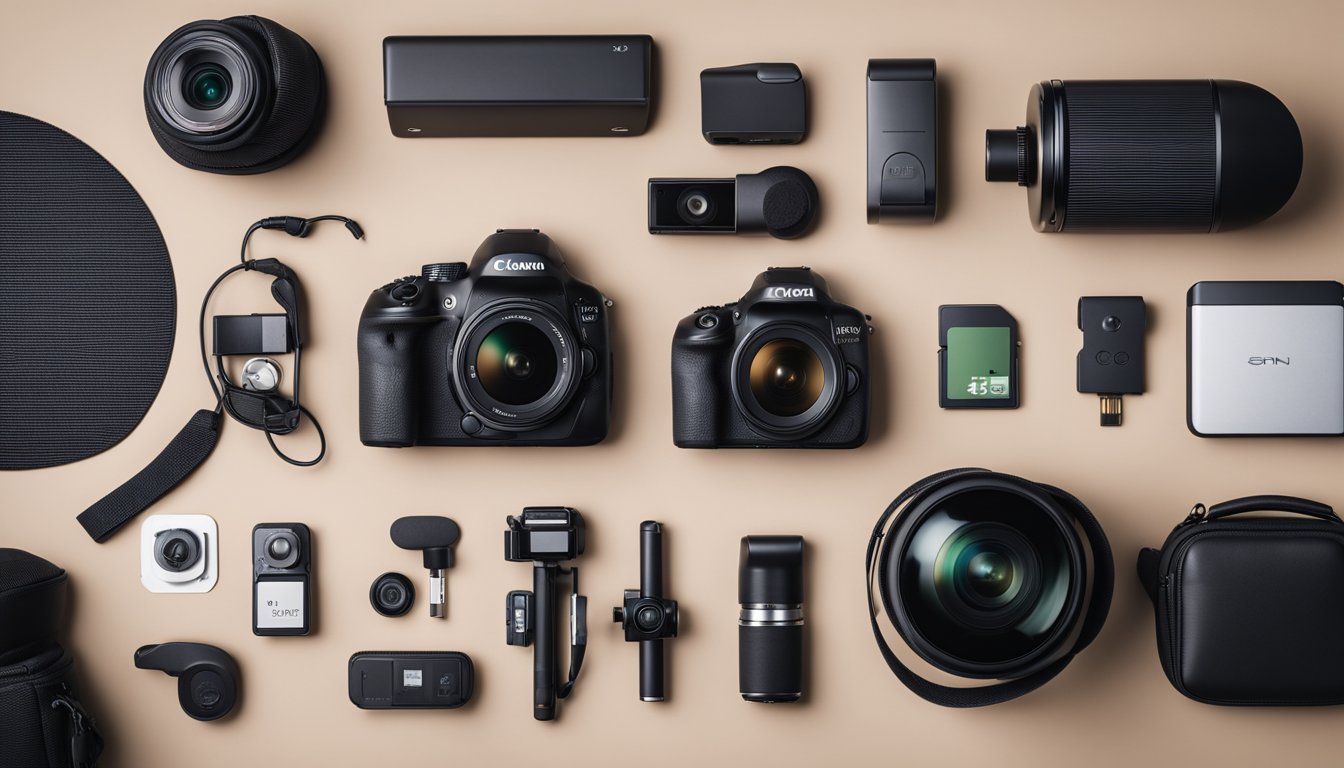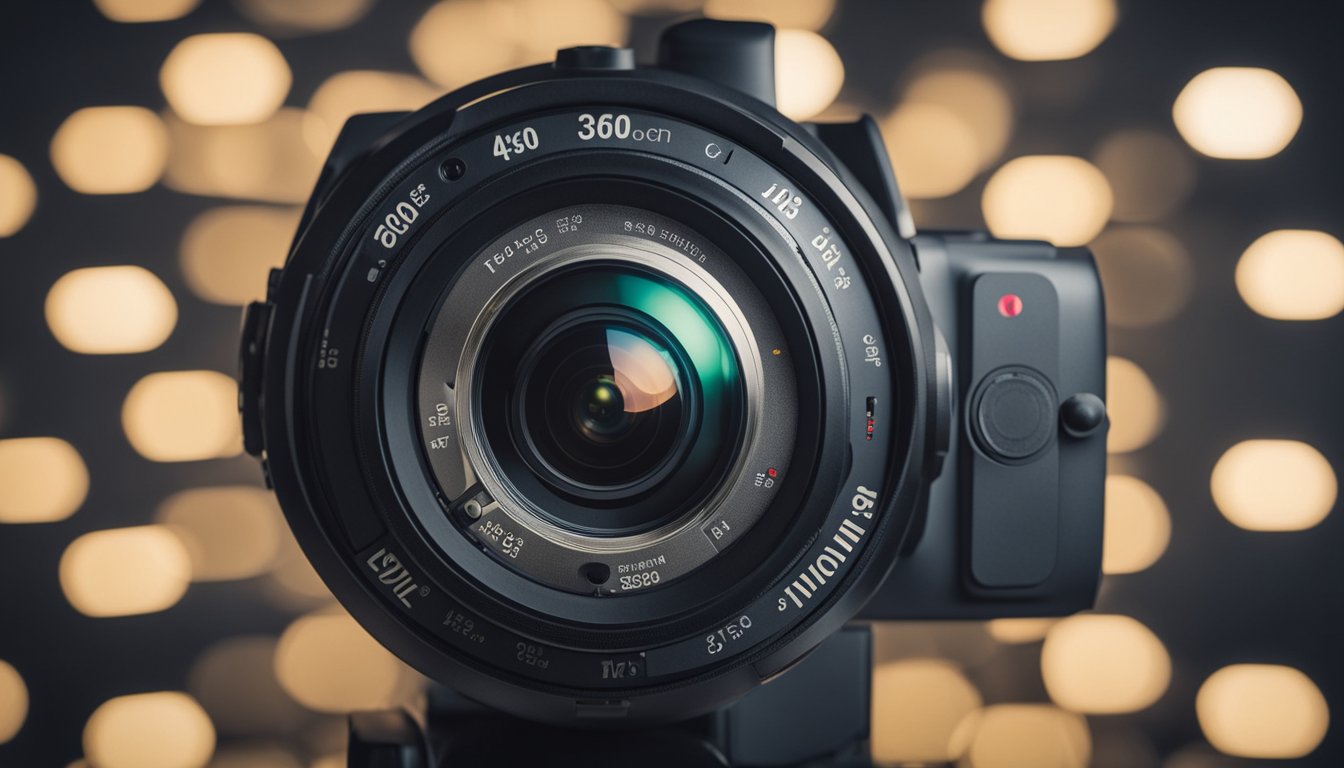Looking for a 360 camera that can capture stunning photos and videos without breaking the bank? You’re in luck. With advancements in technology, you don’t have to spend a fortune to get a decent 360 camera. In fact, there are several models available for under $200 that offer impressive features and capabilities.
If you’re in the market for a 360 camera under $200, there are a few things you should consider before making a purchase. For example, you’ll want to think about the camera’s resolution, battery life, and compatibility with your phone or other devices. You may also want to consider additional features like waterproofing, image stabilization, and editing software. By taking these factors into account, you can find a 360 camera that meets your needs and fits your budget.
Key Takeaways
- You can find a quality 360 camera for under $200.
- When shopping for a 360 camera under $200, consider factors such as resolution, battery life, and compatibility.
- Additional features like waterproofing and image stabilization can enhance your 360 camera experience.
What to Look for in a 360 Camera Under $200
https://www.youtube.com/watch?v=92IXOP-Vo0Y&embed=true
If you’re on a budget and looking for a 360 camera under $200, there are a few things you should consider before making a purchase. Here are some important factors to keep in mind:
Video and Photo Quality
One of the most important things to consider when buying a 360 camera is the quality of the video and photo it produces. Look for cameras with high resolution and frame rates, as well as good image stabilization. A camera with a higher resolution will produce clearer and more detailed photos and videos. Additionally, a higher frame rate will result in smoother video playback.
Durability and Portability
Another important factor to consider is the durability and portability of the camera. You’ll want a camera that is sturdy enough to withstand some wear and tear, especially if you plan on taking it with you on adventures. Additionally, you’ll want a camera that is small and lightweight enough to easily carry with you.

Battery Life and Storage
Battery life and storage are also important factors to consider when buying a 360 camera. You’ll want a camera with a long battery life, especially if you plan on using it for extended periods of time. Additionally, you’ll want a camera with enough storage space to hold all of your photos and videos. Some cameras have built-in storage, while others require an external memory card.
When searching for a 360 camera under $200, keep these factors in mind to ensure you get the best camera for your needs.
Top Picks for 360 Cameras Under $200
https://www.youtube.com/watch?v=FqeZGKZfcK8&embed=true
Looking for a 360-degree camera that won’t break the bank? You’re in luck! There are plenty of great options available for under $200. Here are our top picks for the best 360 cameras under $200.
Best Overall
Our top pick for the best overall 360 camera under $200 is the Samsung Gear 360 (2017). This camera offers great value for the price and is perfect for beginners. It has a compact design and is easy to use, making it a great choice for anyone who wants to capture 360-degree photos and videos without breaking the bank.
Best Value
« Where is the 360 Camera Installed on a Car?
Is Camera 360 App Free? Find Out Here! »
If you’re looking for the best value 360 camera under $200, we recommend the Kodak PIXPRO SP360. This camera offers excellent image quality and is packed with features, including Wi-Fi connectivity and a built-in LCD screen. It’s also durable and rugged, making it a great choice for outdoor adventures.
Best for Action Shots
If you’re looking for a 360-degree camera that’s perfect for action shots, we recommend the Ricoh Theta SC. This camera is compact and lightweight, making it easy to take with you on the go. It’s also waterproof and shockproof, making it a great choice for outdoor adventures. With the ability to shoot 360-degree videos in 1080p, the Ricoh Theta SC is a great choice for anyone who wants to capture their adventures in stunning detail.
In summary, these are our top picks for the best 360 cameras under $200. Whether you’re looking for the best overall camera, the best value, or the best camera for action shots, there’s a camera on this list that’s perfect for you. So why wait? Start capturing your world in 360 degrees today!
Understanding 360 Camera Technologies
When it comes to 360 cameras, there are a few key technologies that you should be aware of. These technologies can have a big impact on the quality of your footage and the ease of use of your camera. In this section, we’ll take a closer look at two of the most important technologies to consider when choosing a 360 camera: image stabilization features and software compatibility.
Image Stabilization Features
One of the biggest challenges of shooting with a 360 camera is keeping your footage stable. Because the camera captures a full 360-degree view, even small movements can result in shaky footage that is difficult to watch. To combat this, many 360 cameras come with built-in image stabilization features.
Image stabilization works by using sensors to detect movement and then adjusting the camera’s position to compensate. Some cameras use optical image stabilization, which physically moves the lens to counteract movement. Others use digital image stabilization, which uses software to crop and adjust the footage to remove shakiness.
When choosing a 360 camera, look for one with good image stabilization features. This will help ensure that your footage is smooth and easy to watch, even if you’re moving around a lot.
Software Compatibility
Another important consideration when choosing a 360 camera is software compatibility. Most 360 cameras come with their own software that allows you to edit and share your footage. However, not all software is created equal.
Some cameras are only compatible with certain operating systems. For example, some cameras may only work with iOS devices, while others may only work with Android. Make sure you choose a camera that is compatible with the devices you plan to use it with.
In addition to device compatibility, you should also consider the features and ease of use of the camera’s software. Look for software that allows you to easily edit and share your footage, and that has features like automatic stitching and color correction to help improve the quality of your footage.
By considering these two key technologies when choosing a 360 camera, you can help ensure that you get a camera that is easy to use and produces high-quality footage.
How to Capture the Best 360 Video and Photos
https://www.youtube.com/watch?v=Zhl9lVJyNio&embed=true
Capturing the best 360 video and photos requires a good understanding of lighting, exposure, camera movement, and angles. In this section, we will provide some tips to help you capture the best 360 video and photos.
Lighting and Exposure
Lighting is one of the most important factors when it comes to capturing good 360 video and photos. When shooting indoors, try to use natural light as much as possible. If you need to use artificial light, avoid using harsh or direct light as it can cause shadows and overexposure. Instead, use diffused light sources such as softboxes or reflectors to create a more even and natural-looking light.
When shooting outdoors, try to avoid shooting during the middle of the day when the sun is at its highest. This can cause harsh shadows and overexposure. Instead, shoot during the early morning or late afternoon when the light is softer and more flattering.
Exposure is also an important factor when it comes to capturing good 360 video and photos. Make sure to adjust your exposure settings based on the lighting conditions. If the lighting is too bright, try decreasing your exposure. If the lighting is too dark, try increasing your exposure.
Camera Movement and Angles
Camera movement and angles can greatly affect the overall quality of your 360 video and photos. When shooting 360 video, it’s important to keep the camera steady and avoid sudden movements as it can cause motion sickness for viewers. When shooting 360 photos, try to find interesting angles and perspectives that will make your photos stand out.
When shooting 360 video, it’s also important to consider the placement of the camera. Try to place the camera at eye level to create a more natural and immersive viewing experience. You can also experiment with different camera angles to create a more dynamic and interesting video.
In conclusion, capturing the best 360 video and photos requires a good understanding of lighting, exposure, camera movement, and angles. By following these tips, you’ll be able to capture stunning 360 video and photos that will impress your audience.
Comparing 360 Camera Resolutions
When shopping for a 360 camera, one of the most important factors to consider is the camera’s resolution. The resolution of a camera refers to the number of pixels that make up the image or video. Generally speaking, the higher the resolution, the better the image or video quality.
1080p vs 4K Video
When it comes to video quality, the two most common resolutions for 360 cameras are 1080p and 4K. 1080p video has a resolution of 1920 x 1080 pixels, while 4K video has a resolution of 3840 x 2160 pixels. This means that 4K video has four times as many pixels as 1080p video.
While 1080p video is still considered high definition and can produce good quality videos, 4K video is becoming the new standard for high-quality video. With 4K video, you can capture more detail and produce sharper, more vibrant videos. However, keep in mind that 4K video files are larger and require more storage space than 1080p video files.
Understanding Megapixels
Another factor to consider when comparing 360 cameras is the number of megapixels (MP) the camera has. Megapixels refer to the number of pixels that make up a single image. Generally speaking, the more megapixels a camera has, the higher the image quality.
However, megapixels are not the only factor that determines image quality. Other factors such as lens quality, sensor size, and image processing also play a role. That being said, a higher number of megapixels can still result in better image quality.
When it comes to 360 cameras, you’ll find that most cameras have a resolution between 12 and 24 megapixels. While this may seem low compared to some traditional cameras, keep in mind that 360 cameras capture a full 360-degree image, which requires more processing power and storage space.
In conclusion, when comparing 360 cameras, it’s important to consider both video and image quality. Look for cameras with a resolution of at least 1080p for video and 12 megapixels for images. Keep in mind that higher resolutions will result in larger file sizes, so make sure you have enough storage space.
Maximizing Your 360 Camera’s Battery Performance
https://www.youtube.com/watch?v=uHFf_JCc11Q&embed=true
If you’re planning to use your 360 camera for a long time, you’ll need to make sure that its battery is fully charged and that you’re doing everything you can to maximize its performance. In this section, we’ll provide you with some tips and tricks to help you get the most out of your 360 camera’s battery life.
Tips for Longer Battery Life
Here are some tips for maximizing your 360 camera’s battery life:
-
Turn off Wi-Fi and Bluetooth when not in use: Wi-Fi and Bluetooth are two of the biggest battery drains on your 360 camera. If you’re not using them, turn them off to save battery life.
-
Lower the resolution: If you’re not planning to use your 360 camera for professional purposes, consider lowering the resolution to save battery life. Lower resolutions require less processing power, which means less strain on your camera’s battery.
-
Turn off the camera when not in use: If you’re not actively using your 360 camera, turn it off to save battery life. Leaving it on will drain the battery quickly.
-
Use a power bank: If you’re planning to use your 360 camera for an extended period of time, consider investing in a power bank. This will allow you to charge your camera on the go, without having to worry about running out of battery.
Understanding Battery Specifications
To get the most out of your 360 camera’s battery, it’s important to understand its specifications. Here are some key terms to look out for:
-
Capacity: This refers to the amount of energy that the battery can store. The higher the capacity, the longer the battery will last.
-
Voltage: This refers to the amount of electrical pressure that the battery can handle. The higher the voltage, the more power the battery can deliver.
-
Watt-hours (Wh): This is a measure of the amount of energy that the battery can deliver over an hour. The higher the watt-hour rating, the longer the battery will last.
By understanding these specifications, you’ll be able to make more informed decisions about which 360 camera to purchase and how to best use its battery.
Creative Ways to Use Your 360 Camera
https://www.youtube.com/watch?v=BMI2_Fjf3ws&embed=true
Your 360 camera can be used in a variety of creative ways to capture stunning and immersive photos and videos. Here are some ideas to get you started:
For Social Media and Livestreaming
360 cameras are perfect for capturing content for social media platforms and livestreaming. With a 360 camera, you can create unique and interactive content that engages your audience. Here are some ways to use your 360 camera for social media and livestreaming:
-
Livestream events: Use your 360 camera to livestream events on social media platforms like Facebook and YouTube. Your audience will feel like they are right there with you, experiencing the event in real-time.
-
Create 360-degree photos and videos: Use your 360 camera to create 360-degree photos and videos that can be shared on social media platforms like Instagram and Twitter. These immersive photos and videos will help your content stand out from the crowd.
-
Create virtual tours: Use your 360 camera to create virtual tours of your business or event space. These tours can be shared on social media or your website, allowing your audience to experience your space in a unique and interactive way.
Adventure and Travel Photography
360 cameras are perfect for adventure and travel photography. They allow you to capture stunning panoramic views and immersive experiences that traditional cameras can’t. Here are some ways to use your 360 camera for adventure and travel photography:
-
Capture panoramic views: Use your 360 camera to capture panoramic views of landscapes, cityscapes, and other scenic locations. These photos and videos will allow you to relive your adventure and share it with others.
-
Create immersive travel vlogs: Use your 360 camera to create immersive travel vlogs that take your audience on a journey with you. These vlogs will allow your audience to experience your travels in a unique and interactive way.
-
Capture action shots: Many 360 cameras are also action cameras, making them perfect for capturing adventurous activities like hiking, biking, and skiing. These action shots will allow you to relive your adventures and share them with others.
In conclusion, your 360 camera is a versatile tool that can be used in a variety of creative ways. Whether you’re creating content for social media, livestreaming events, or capturing stunning travel photos and videos, your 360 camera will allow you to create immersive experiences that engage your audience.
360 Cameras and Virtual Reality
https://www.youtube.com/watch?v=k_xGcuy4_fs&embed=true
If you’re interested in creating immersive virtual reality experiences, a 360 camera is an essential piece of equipment. With a 360 camera, you can capture footage in all directions, allowing viewers to look around and explore your content as if they were actually there.
Pairing with VR Headsets
To fully experience your 360 content, you’ll need a VR headset. There are many different VR headsets on the market, ranging from affordable options like the Google Cardboard to high-end devices like the Oculus Rift. When choosing a VR headset, consider factors like comfort, resolution, and compatibility with your smartphone or computer.
Once you have a VR headset, you can connect it to your smartphone or computer and start exploring 360 content. Some 360 cameras even come with their own VR headset, making it easy to get started right away.
Creating Immersive VR Content
To create immersive VR content, it’s important to think about how your viewers will interact with your content. Consider factors like camera placement, lighting, and sound to create a truly immersive experience.
When shooting with a 360 camera, it’s important to keep in mind that viewers will be able to see everything in the frame. This means that you’ll need to carefully consider camera placement and framing to ensure that your content is visually appealing and engaging.
In addition to camera placement, lighting and sound are also important considerations when creating immersive VR content. Proper lighting can help draw viewers’ attention to important elements in your scene, while high-quality sound can help create a more immersive experience.
Overall, a 360 camera is an essential tool for creating immersive virtual reality experiences. With the right equipment and techniques, you can create content that transports viewers to new and exciting worlds.
Troubleshooting Common 360 Camera Issues
https://www.youtube.com/watch?v=RO3a6EGlQcA&embed=true
If you’re experiencing issues with your 360 camera, don’t worry, you’re not alone. Here are some of the most common problems and how to fix them.
Connectivity Problems
One of the most common issues with 360 cameras is connectivity problems. If you’re having trouble connecting your camera to your phone or computer, try the following:
- Make sure your camera is turned on and fully charged.
- Check that your phone or computer is compatible with your camera.
- Move your camera closer to your phone or computer.
- Try resetting your camera and reconnecting it.
If none of these steps work, consult your camera’s manual or contact customer support for further assistance.
Image and Video Noise
Another common issue with 360 cameras is image and video noise. This can be caused by a number of factors, including low light conditions and a slow shutter speed. Here are some tips for reducing noise in your photos and videos:
- Use a tripod or other stabilizing device to keep your camera steady.
- Make sure your camera is set to the appropriate ISO and shutter speed for the lighting conditions.
- Use a noise reduction filter in post-processing software.
If you’re still experiencing noise in your photos and videos, consult your camera’s manual or contact customer support for further assistance.
Remember, troubleshooting your 360 camera can be frustrating, but with a little patience and persistence, you can get back to capturing stunning 360-degree photos and videos in no time.
Accessorizing Your 360 Camera
So, you’ve got your 360 camera, but what’s next? Accessorizing your camera can take your 360 experience to the next level. Here are some must-have add-ons and ways to enhance your camera with lenses and mounts.
Must-Have Add-Ons
Tripod
A tripod is a must-have accessory for any camera, and your 360 camera is no exception. A tripod will help you keep your camera stable while shooting, which is especially important when capturing 360 content. Look for a tripod with adjustable legs and a ball head for easy positioning.
External Battery Pack
If you plan on shooting for extended periods, consider purchasing an external battery pack for your 360 camera. This will ensure that you don’t run out of power mid-shoot and can keep capturing your 360 content without interruption.
Memory Card
Most 360 cameras come with a built-in memory card, but it’s always a good idea to have a spare on hand. Look for a high-capacity memory card with fast read and write speeds to ensure that you can capture all of your 360 content without worrying about running out of storage space.
Enhancing with Lenses and Mounts
Fisheye Lens
A fisheye lens can help you capture even more of your surroundings in your 360 content. Look for a fisheye lens that is compatible with your camera and offers a wide field of view.
Suction Mount
A suction mount is a great way to attach your 360 camera to smooth surfaces like car windows or mirrors. This will allow you to capture unique perspectives that would be difficult to achieve otherwise.
Protective Case
Protect your 360 camera from scratches and damage with a protective case. Look for a case that is specifically designed for your camera model for the best fit and protection.
In conclusion, accessorizing your 360 camera can take your 360 experience to the next level. Consider purchasing a tripod, external battery pack, or memory card to ensure you can keep capturing your 360 content without interruption. Enhance your camera with a fisheye lens, suction mount, or protective case to capture unique perspectives and protect your camera.
Frequently Asked Questions
What are the top budget-friendly 360 cameras available in 2023?
There are several budget-friendly 360 cameras available in 2023. Some of the top options include the Samsung Gear 360 (2017), the Insta360 Air, and the Ricoh Theta SC2. These cameras offer good image quality and features at an affordable price point.
Can you recommend a 360 camera that performs well in low light conditions?
If you are looking for a 360 camera that performs well in low light conditions, the Insta360 ONE X2 is a great option. It features a larger sensor and improved low-light performance compared to its predecessor, the Insta360 ONE X. Additionally, the Ricoh Theta SC2 and the Samsung Gear 360 (2017) also offer decent low-light performance.
Are there any compact 360 cameras that are easy to carry around?
Yes, there are several compact 360 cameras that are easy to carry around. The Insta360 Go 2 is a tiny camera that fits in the palm of your hand and can be attached to your clothes or accessories. The Ricoh Theta SC2 is also a compact option that can easily fit in your pocket or bag.
Which 360 cameras are best suited for adventure sports like snowboarding?
If you plan to use a 360 camera for adventure sports like snowboarding, you need a camera that is rugged and can withstand harsh conditions. The GoPro MAX is a great option for this purpose. It is waterproof, shockproof, and can be attached to your helmet or gear. The Insta360 ONE X2 is also a good option, as it is designed to be used in extreme conditions.
What should I look for in a 360 camera if I want to use it for home security?
If you want to use a 360 camera for home security, you should look for a camera that has good resolution and a wide field of view. The Wyze Cam 360 and the YI 360 Dome Camera are both affordable options that offer 360-degree coverage and high-resolution video.
What are some common limitations I might face with an affordable 360 camera?
Some common limitations of affordable 360 cameras include lower image quality compared to more expensive models, limited battery life, and fewer advanced features. Additionally, some budget-friendly 360 cameras may not be as durable or rugged as more expensive options. However, there are still many great options available at an affordable price point that offer good value for the money.










